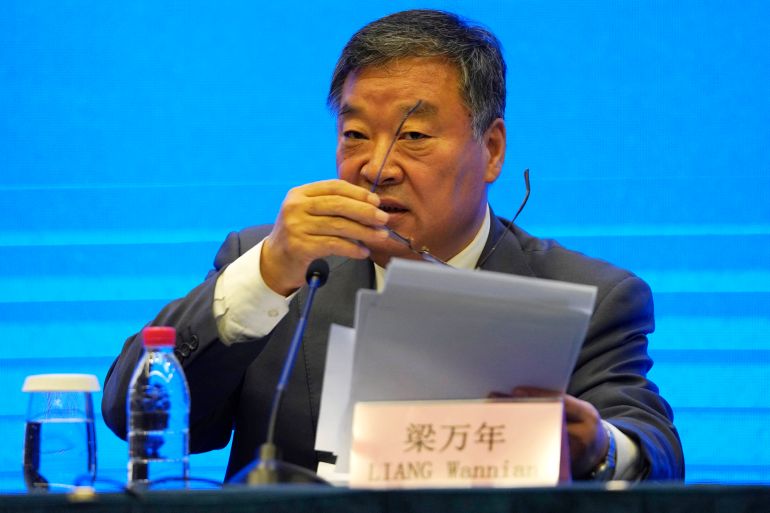WHO team in Wuhan says coronavirus source ‘remains unidentified’
Experts also say there was no substantial spread of SARS-COV-2 in Wuhan before the late 2019 outbreak.

An expert mission from the World Health Organization (WHO) investigating the origins of the coronavirus pandemic in China says it has yet to identify the animal source and it is unlikely to have leaked from a Chinese lab.
WHO food safety and animal diseases expert Peter Ben Embarek made the assessment on Tuesday at the end of a visit to the central Chinese city of Wuhan, where a team of scientists is investigating the possible origins of the coronavirus. The first cases were discovered in the city in December 2019.
Keep reading
list of 3 itemsIn Pictures: COVID resurgence dampens China New Year celebrations
Facebook cracks down on anti-vaccine accounts amid COVID surge
“Our initial findings suggest that the introduction through an intermediary host species is the most likely pathway and one that will require more studies and more specific, targeted research,” Embarek said.
“However, the findings suggest that the laboratory incidents hypothesis is extremely unlikely to explain the introduction of the virus to the human population,” Embarek said.
The Wuhan Institute of Virology collected extensive virus samples, leading to allegations it may have caused the original outbreak by leaking the virus into the surrounding community. China has strongly rejected that possibility and has promoted other theories that the virus may have originated elsewhere, including from the United States.
The team is considering several theories for how the disease first ended up in humans.
No evidence
Liang Wannian, an expert with China’s National Health Commission, told reporters in Wuhan the joint Chinese and WHO team of 34 experts believe the virus originated in an animal, “but the reservoir host remains to be identified”.
Wuhan is the city where the virus was first identified, and Liang said there was no evidence to suggest it spread in the city before the first official cases were recorded in December 2019.
He also went on to suggest the virus could have been circulating in other regions before it was identified in China.
A literature review of research that included “unpublished studies from different countries, suggest that SARS-Cov-2 circulation preceding the initial detection of cases by several weeks,” he said.
“Some of the suspected positive samples were detected even earlier than the first case reported. This indicates the possibility of the misreported circulation in other regions.”
Analysis of records of respiratory illnesses reported at hospitals in Wuhan and the surrounding Hubei province show “there is no substantial unrecognised circulation of SARS-COV-2 in Wuhan during the latter part of 2019”, he added.
Embarak, who was based in the WHO’s Beijing office for two years from 2009, backed up the assertion, saying there was no evidence of “large outbreaks in Wuhan” before then.
Transmission through the trade in frozen products was also a likely possibility, Embarek said.
The mission is a diplomatically knotty one, which was hounded even before it began by fears of a whitewash, with the United States demanding a “robust” probe and China firing back with a warning not to “politicise” the investigation.
The visit by the WHO team took months to negotiate after China only agreed to it amid massive international pressure at the World Health Assembly meeting last May, and Beijing has continued to resist calls for a strictly independent investigation.
Chinese authorities have kept a tight hold on information about the possible causes of the pandemic that has now killed more than 2.3 million worldwide.